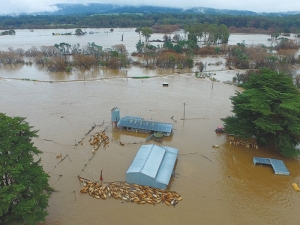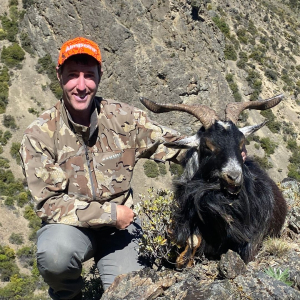Hundreds of dairy cows were killed and farms across Tasmania severely damaged this month in the worst flooding many farmers have ever experienced.
Major dairy regions around the state's north-west and mid-north coast were among the worst hit.
Merseylea dairy farmer Luke Bloomfield lost 300 cows.
"We've been breeding the cows for quite a while on the farm... it is heartbreaking for me. I've put in a lot of time," he told the ABC.
The Tasmanian Farmers and Graziers Association (TFGA) estimates losses of up to 1000 head of beef and dairy cows in the Latrobe area.
Farms near Meander, Launceston in the north-east and Ouse in the south are also badly damaged. DairyTas says 50-80 dairy farms were severely hit by the flooding, and many more are affected.
TFGA dairy council president Andrew Lester escaped major damage on his Winnaleah farm, but says others have not been as lucky.
"We got out of it with only a few fences buggered but other than that we're good. But when you get out to Latrobe it's a different story: a group of farmers there are seriously devastated; they're milking in different spots. One bloke's dairy -- the water went straight through so it's no longer operational.
"Another fella lost most of his cows; his dairy is still alright but he's only milking what he's got left.
"Another bloke is still watching his cows through binoculars; they're standing on an island out in the middle of nowhere, so that's a bit of a bugger."
Many farmers are preparing for no milk collection for a long spell because about 100 roads were closed soon after the flooding and dozens of bridges were washed away.
Animal health and feed shortages will become major problems, but Mark Smith, DairyTas, says the immediate priority is assessing damage and preparing a case for state and federal government assistance.
The farmers can get help from the Rural Relief Fund through Rural Business Tasmania. Donations can be made at www.ruralbusinesstasmania.org.au/relief-fund


















